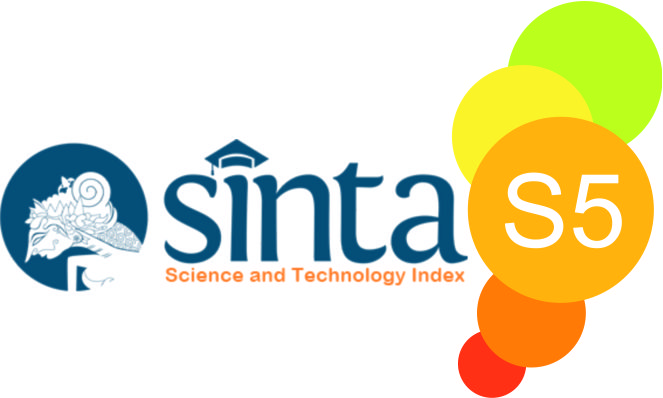Penerapan Green Human Resources Management pada New Sunari Lovina Beach Resort
DOI:
https://doi.org/10.23887/jmpp.v5i3.50837Keywords:
Green Human Resources Management, Human Resources Department, HotelAbstract
This research is a qualitative descriptive study that aims to analyze the application of Green Human Resource Management to management commitment, especially in the human resources department, which will lead to the formation of green employee performance in carrying out their work in operations. This research was conducted at New Sunari Lovina Beach Resort for three months with data collection methods, namely interviews, observation, documentation, and literature study. The sample used in the interview process is hotel management, totaling eight people, namely department heads in all departments. The results of this study indicate that the application of Green Human Resource Management at New Sunari Lovina Beach Resort has been implemented but is not optimal. The not yet optimal implementation of Green Human Resources Management at New Sunari Lovina Beach Resort is caused by several factors, including the unstructured Standard Operating Procedure (SOP), management commitment, and a limited budget.
References
Adjei-Bamfo, P., Bempong, B., Osei, J., & Kusi-Sarpong, S. (2020). Green candidate selection for organizational environmental management. International Journal of Manpower. https://doi.org/10.1108/IJM-10-2019-0480
Alhadid, A. Y., & As’ ad, H. A.-R. (2014). The Impact of green innovation on organizational performance, environmental management behavior as a moderate variable: An analytical study on Nuqul group in Jordan. International Journal of Business and Management, 9(7), 51. http://dx.doi.org/10.5539/ijbm.v9n7p51
Arulrajah, A. A., & Opatha, H. (2016). Analytical and theoretical perspectives on green human resource management: A simplified underpinning. http://dx.doi.org/10.5539/ibr/v9nl2pl53
Bansal, P., & Roth, K. (2000). Why companies go green: A model of ecological responsiveness. Academy of Management Journal, 43(4), 717–736. https://doi.org/10.5465/1556363
Bassyarudin, U. (2016). Media pendidikan. Al-Afkar: Jurnal Keislaman & Peradaban, 5(1). https://repository.uinjkt.ac.id/dspace/handle/123456789/60176
Čech, M., Yao, W., Samolejova, A., Li, J., & Wicher, P. (2016). Human resource management in Chinese manufacturing companies. Perspectives in Science, 7, 6–9. http://dx.doi.org/10.1016/j.pisc.2015.11.003
Dutta, D. (2012). Greening people: A strategic dimension. ZENITH International Journal of Business Economics & Management Research, 2(2). https://ssrn.com/abstract=2382034
Erdogan, B., Bauer, T. N., & Taylor, S. (2015). Management commitment to the ecological environment and employees: Implications for employee attitudes and citizenship behaviors. Human Relations, 68(11), 1669–1691. https://doi.org/10.1177/0018726714565723
Iman, B. (2017). Hotel Sunari Beach Resort, Penginapan Murah di Dekat Pantai Lovina. Hotel Sunari Beach Resort, Penginapan Murah Di Dekat Pantai Lovina. https://www.kintamani.id/hotel-sunari-beach-resort-penginapan-murah-dekat-pantai-lovina/
Jackson, S. E., & Seo, J. (2010). The greening of strategic HRM scholarship. Organization Management Journal, 7(4), 278–290. https://doi.org/10.1057/omj.2010.37
Keraf, A. S. (2010). Etika lingkungan hidup. Penerbit Buku Kompas. https://books.google.co.id/books?hl=id&lr=&id=gW6qG0DQ2_cC&oi=fnd&pg=PA1&dq=Keraf,+A.+S.+(2010).+Etika+lingkungan+hidup.+Penerbit+Buku+Kompas.&ots=rRZfRKQ43O&sig=IbVRcCFCUchPYqErzT1YPjdSLPc&redir_esc=y#v=onepage&q=Keraf%2C A. S. (2010). Etika lingkungan hidup. Penerbit Buku Kompas.&f=false
Kunto, S. A. (2010). Prosedur Penelitian Suatu Pendekatan Praktek. Penerbit: Rineka Cipta, Jakarta.
Lo, S. H., Peters, G. Y., & Kok, G. (2012). A review of determinants of and interventions for proenvironmental behaviors in organizations. Journal of Applied Social Psychology, 42(12), 2933–2967. https://doi.org/10.1111/j.1559-1816.2012.00969
RA Noe, JR Hollenbeck, P. B. G. (2008). Manajemen Sumber Daya Manusia Mencapai Keunggulan Bersaing. Salemba Empat. http://digilib.itbwigalumajang.ac.id/index.php?p=show_detail&id=1746
Renwick, D. W. S., Redman, T., & Maguire, S. (2013). Green human resource management: A review and research agenda. International Journal of Management Reviews, 15(1), 1–14. https://doi.org/10.1111/j.1468-2370.2011.00328.x
Setiawan, G. (2004). Implementasi dalam birokrasi pembangunan. Bandung: Remaja Rosdakarya Offset.
Sugiyono, P. (2015). Metode penelitian kombinasi (mixed methods). Bandung: Alfabeta, 28, 1–12.
Yusliza, M.-Y., Othman, N. Z., & Jabbour, C. J. C. (2017). Deciphering the implementation of green human resource management in an emerging economy. Journal of Management Development. https://doi.org/10.1108/JMD-01-2017-0027
Zaman, M. D. K. (2012). The environmental ethical commitment (EEC) of the business corporations in Malaysia. Procedia-Social and Behavioral Sciences, 36, 565–572. https://doi.org/10.1016/j.sbspro.2012.03.062
Zientara, P., & Zamojska, A. (2018). Green organizational climates and employee pro-environmental behaviour in the hotel industry. Journal of Sustainable Tourism, 26(7), 1142–1159. https://doi.org/10.1080/09669582.2016.1206554










